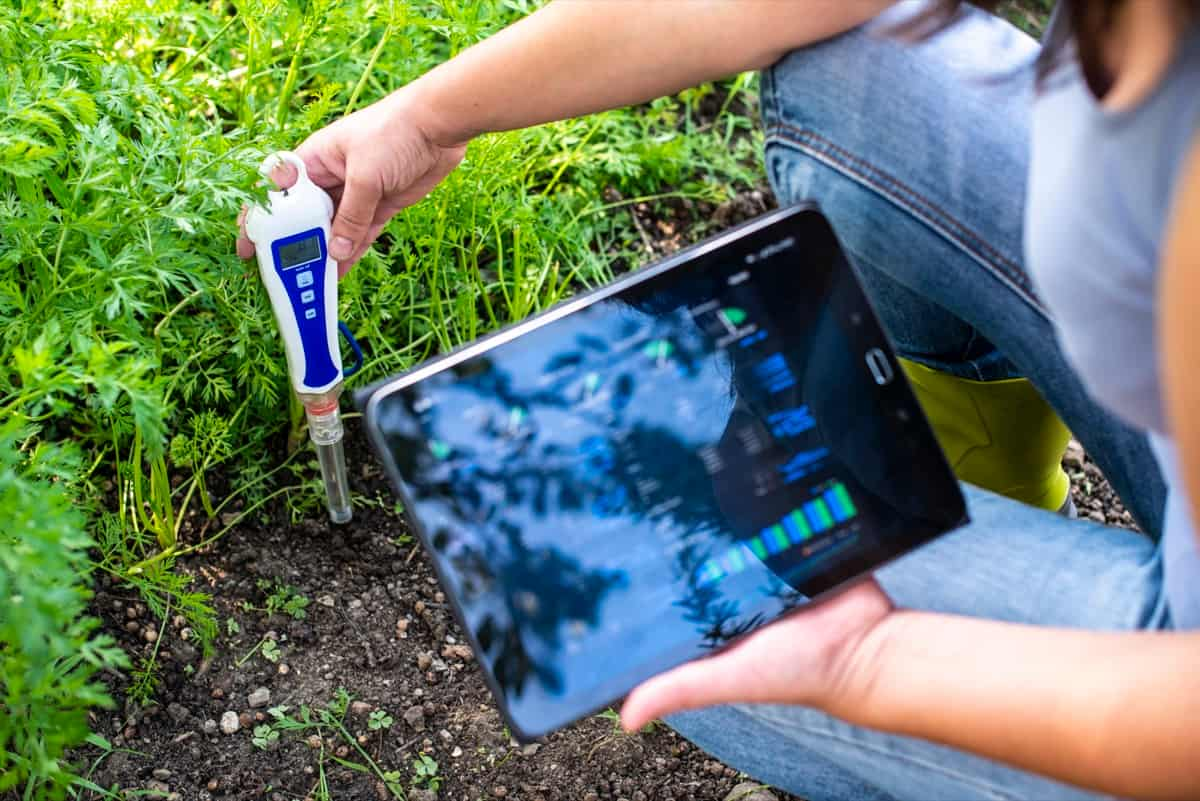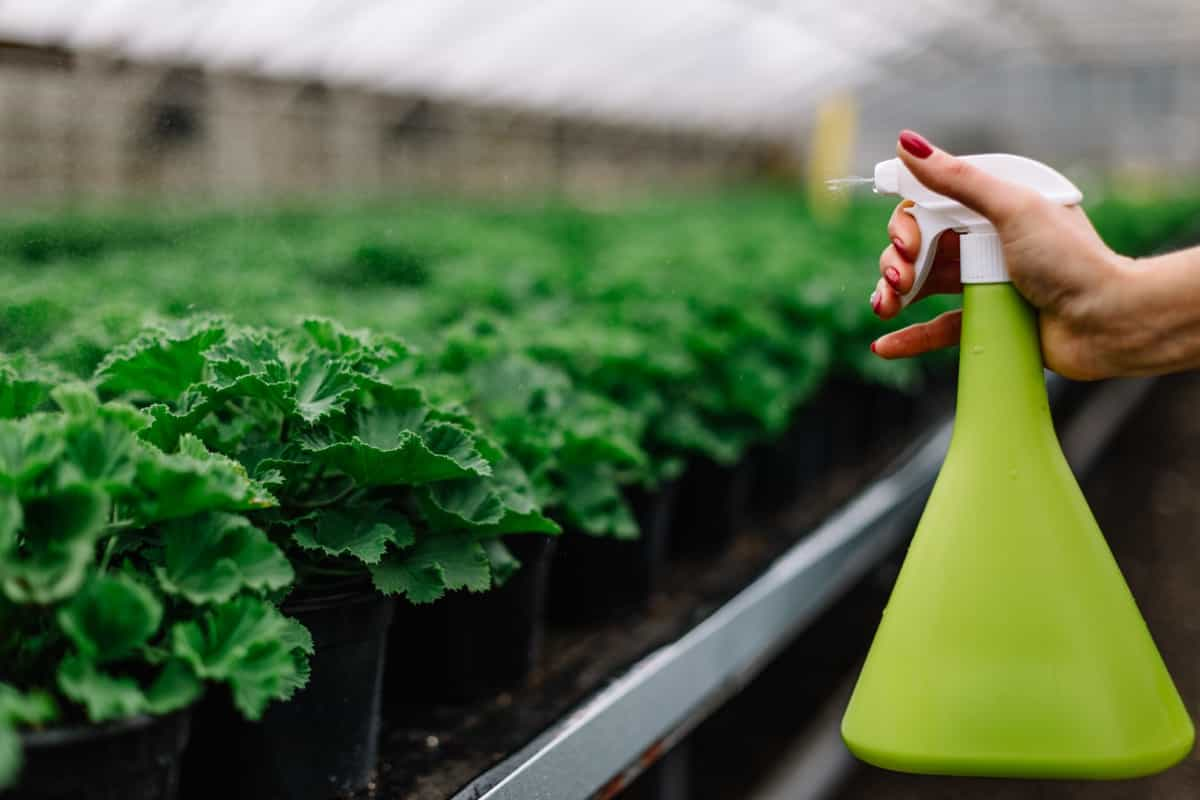
Hello, eco-conscious farmers and gardeners, Today we are here with the interesting topic of why most people fail at starting an organic farm at home and how to avoid it. Well, many people think starting a small organic farm at home sounds like the perfect dream, but that’s not true. Once you create a thriving organic farm at home, you can start growing fresh, chemical-free food on your own and even earn a little extra income. However, most people fail within the first year. Why? Because they underestimate the challenges with organic growing, skip crucial steps, start with half knowledge, or dive in without a proper plan. Don’t worry, though! We’ll uncover the top reasons why most people fail to start an organic farm at home and also go through how you can avoid making the mistakes. What are we thinking? Let’s jump in to grow organic food right at your home.
Skipping the Soil Test—And Regreting Later
Many urban homesteaders don’t understand the importance of soil and think dirt is just dirt, but soil is the foundation of your organic farm. Many beginners skip or don’t know to test their soil. And late they find it that the soil is too acidic, nutrient-deficient, or contaminated. This negligence and lack of soil knowledge can ruin your organic farm and waste months of effort and money.
How to Avoid This Mistake

Before starting your garden and planting anything, get your soil tested with an at-home kit, or you can ask your local agriculture/horticulture office to test it for you. This soil test will analyze for nutrients, deficiencies, and any contaminants present. Based on the test results, you can amend your soil with compost, lime, or other organic fertilizers to increase its fertility to 100%.
| Soil Issue | Signs to Watch For | Solution to Fix |
| Low pH (Too Acidic) | Yellowing leaves, stunted growth | Add lime or wood ash |
| High pH (Too Alkaline) | Brown spots, poor fruiting | Add sulfur or pine needles |
| Nutrient Deficiency | Pale leaves, weak stems | Use compost or organic fertilizers |
| Contaminated Soil | Plants dying unexpectedly | Replace top soil with clean soil |
If you understand the above mistake, now you can answer yourself, “Why Your Organic Farm at Home Might Not Survive.”.
They Overplant and Get Overwhelmed
Many people only think of greenery and dreams about a bountiful harvest. However, they will not realize until that overplanting leads to overcrowded plants. Planting too many seedlings in limited spaces will be a disaster. This will waste resources and may cause pathogones.
In case you missed it: When is it too late to prune vegetable plants for maximum yield.
How to Avoid This Mistake
If you’re a beginner, start with easy-grown foods like tomatoes, lettuce, and radishes. Make sure these plants thrive in your regional climate. Once you’ve gained experience, you can expand your farm gradually with more crops.
| Food Type | Difficulty Level | Time to Harvest | Space Needed |
| Lettuce | Easy | 30-45 days | Small beds. |
| Tomatoes | Moderate | 65-80 days | Medium-sized containers or small beds. |
| Carrots | Easy | 70-80 days | Raised beds or beds. |
| Strawberries | Moderate | 95-120 days | Hanging baskets or rows on beds. |
They Forget About Pest Control—Until It’s Too Late
The idea that pests won’t be an issue in organic farming is one of the most widespread misconceptions by beginners. They most definitely will be. If you’re not ready, many pests and bugs like slugs and aphids can destroy your garden. Additionally, many first-timers find it difficult to protect their plants because organic farming reduces the use of chemical pesticides.
How to Avoid This Mistake

Prevention is essential. Use marigold as companion plants to repel insects and natural predators such as ladybugs. You can also apply Neem oil or garlic water. Inspect your plants on a regular basis for signs of infestation and take action as soon as you notice any problems.
| Pest | Signs of Infestation | Organic Solution |
| Aphids | Sticky residue, curled leaves | Spray with soapy water or neem oil |
| Slugs/Snails | Holes in leaves, slime trails | Set beer traps or use diatomaceous earth |
| Whiteflies | Tiny white bugs flying around | Introduce ladybugs or use insecticidal soap |
| Caterpillars | Chewed leaves, droppings | Handpick |
Ignoring Crop Rotation—and Soil Suffers
Planting the same crop in the same location year after year depletes nutrients in the soil and invites many soil-borne pathogons. This practice, known as monocropping, is a common mistake that most gardeners don’t understand and results in low yields and unhealthy plants.
How to Avoid This Mistake?
Just rotate your crops. Annual crop rotation ensures that different nutrients are used and replenished. For instance, you can pair nitrogen-hungry plants like corn with nitrogen-fixing legumes like beans or peas.
| Crop Family | Examples | Nutrient Impact |
| Nightshades | Tomatoes, peppers, eggplants | Heavy feeders |
| Legumes | Beans, lentils, peas | Nitrogen fixers |
| Brassicas | Broccoli, cabbage, kale | Moderate feedersl |
| Root Vegetables | Carrots, beets, radishes | Light feeders |
Underestimate Watering Needs—Killing Crops
Watering seems simple enough, doesn’t it? Wrong. Overwatering and underwatering are two of the most common mistakes done by beginners in organic farming. Both can cause stress in your plants, doseases, and lower yields.
How to Avoid This Mistake

Purchase a drip irrigation system or soaker hoses to deliver water directly to the roots, which can reduce water consumption and prevent root rot diseases.. Check the soil moisture on a regular basis by inserting your finger into the soil; if it feels dry an inch down, it is time to water. Mulching also helps to keep moisture in and regulate temperature and weeds.
| Plant Type | Watering Frequency | Signs of Overwatering | Signs of Underwatering |
| Leafy Greens | Daily -light watering | Yellowing leaves, root rot | Wilting, dry soil |
| Tomatoes | Every 2-3 days | Splitting fruit, moldy leaves | Drooping leaves, cracked stems |
| Herbs | Every 3 days | Mushy stems, fungal growth | Brittle leaves, slow growth |
| Fruit Trees | Weekly -deep watering | Leaf drop, soggy soil | Browning edges, premature fruit drop |
One of the most challenging aspects of organic farming is seasonality. Planting the wrong crops at the wrong time can lead to frost damage, heat stress, and no harvest at all. Many beginners ignore their region’s climate and growing season.
Not Planning for Seasonal Changes—and Losing Harvest
One of the most challenging aspects of organic farming is seasonality. Planting the wrong crops at the wrong time can lead to frost damage, heat stress, and no harvest at all. Many beginners overlook their region’s climate and growing season.
In case you missed this: Governament Grants for Organic Farming in India.
How to Avoid This Mistake?
Start by looking up your USDA Hardiness Zone or local climate patterns. Choose crops that thrive in your region during certain seasons. Cool-season crops, such as spinach and kale, thrive in the spring and fall, whereas warm-season crops, such as tomatoes and peppers, require warm weather.
| Season | Best Crops to Grow | Tips for Success |
| Spring | Lettuce, peas, radishes | Use row covers to protect from late frosts |
| Summer | Tomatoes, peppers, cucumbers | Provide shade cloth during heatwaves |
| Fall | Kale, carrots, broccoli | Mulch heavily to retain warmth |
| Winter | Garlic, onions, cover crops | Use cold frames or greenhouses |
Neglecting Record-Keeping—and Repeating the Same Mistakes
Have you ever heard the phrase, “Those who fail to plan, plan to fail?” Keeping a list of what works and what doesn’t is critical to long-term success. Unfortunately, many beginners skip this step, resulting in the same mistakes year after year.
How to Avoid This Mistake?
To keep track of planting dates, weather conditions, pest problems, and harvest results, use a gardening journal or digital spreadsheet. This information will allow you to fine-tune your strategy and make more informed decisions in the coming seasons.
In case you missed this: Tomato Bountiful Harvest in Backayrds.
| Record Category | What to Track | Why It Matters |
| Planting Dates | When seeds were sown/planted | Helps optimize timing for next season |
| Weather Conditions | Rainfall, temperature fluctuations | Identifies environmental stressors |
| Pest/Disease Issues | Types of pests, treatments used | Prevents recurring problems |
| Yield Results | Quantity and quality of harvest | Measures productivity and profitability |
The Real Cost of Starting an Organic Farm at Home

| Category | Item/Expense | Estimated Cost (USD) | Notes |
| Initial Setup Costs | Soil Testing Kit | $25 – $50 | Essential for understanding your soil’s pH. |
| Seeds or Seedlings | $35 – $100 | Depends on the variety and quantity of crops. | |
| Compost or Organic Fertilizer | $25 – $80 | A bag of high-quality compost | |
| Gardening Tools | $55 – $150 | Basic tools are necessary for planting. | |
| Raised Beds or Containers | $100 – $300 | Recommended for better drainage and pest control. | |
| Irrigation System | $50 – $200 | Saves water. | |
| Mulch | $20 – $50 | Helps retain moisture | |
| Ongoing Expenses | Water Bills | $10 – $30/month | It depends on the size of your farm. |
| Pest Control | $10 – $50/month | Includes neem oil, diatomaceous earth. | |
| Replacement Seeds/Seedlings | $20 – $60/year | For replanting after harvests or crop rotation. | |
| Soil Amendments | $30 – $100/year | To replenish nutrients and maintain soil health. | |
| Tools Maintenance | $20 – $50/year | Sharpening blades, replacing broken tools, etc. | |
| Potential Savings | Grocery Bill Reduction | $50 – $200/month | Growing your own produce reduces the need to buy vegetables, fruits, and herbs. |
| Reduced Waste | N/A | Composting kitchen scraps. | |
| Health Benefits | N/A | Eating fresh, pesticide-free produce improves overall health and well-being. | |
| Potential Income | $100 – $500+/year | Selling excess produce at farmers’ markets. |
Conclusion: Transform failure into success
Starting a small organic farm at home does not always fail. You can set yourself up for success by avoiding these common pitfalls: skipping the soil test, overplanting, ignoring pests, neglecting crop rotation, mismanaging water, failing to plan for seasons, and ignoring record-keeping. Remember that organic farming is a journey, not an endpoint. With patience, planning, and perseverance, you can transform your backyard into a thriving oasis of fresh, healthy vegetables.
So, are you ready to make the plunge? Follow these guidelines, and watch your organic farm flourish!




